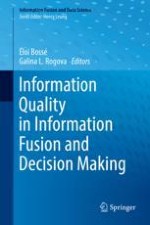2019 | OriginalPaper | Buchkapitel
10. Information Quality and Social Networks
verfasst von : Pontus Svenson
Erschienen in: Information Quality in Information Fusion and Decision Making
Aktivieren Sie unsere intelligente Suche, um passende Fachinhalte oder Patente zu finden.
Wählen Sie Textabschnitte aus um mit Künstlicher Intelligenz passenden Patente zu finden. powered by
Markieren Sie Textabschnitte, um KI-gestützt weitere passende Inhalte zu finden. powered by
